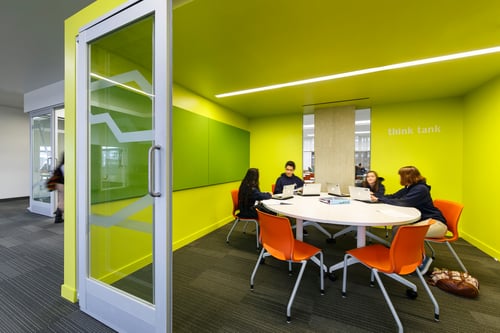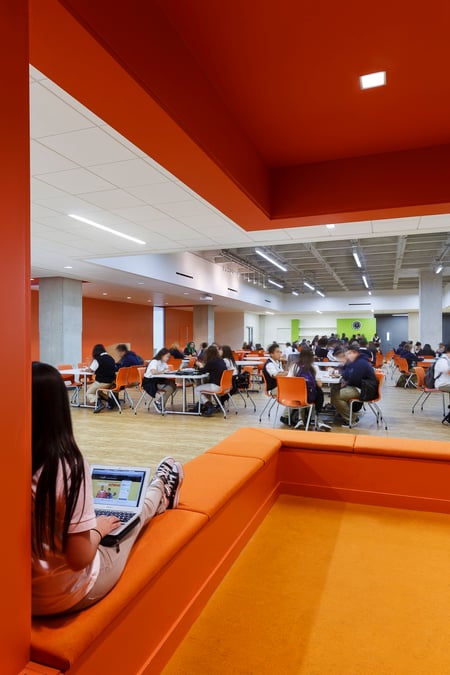What’s the Future of Educational Design?
Fri, Jun 03, 2016 Emily Koch educational design, Emily Koch, K-12 Schools, E3 Civic High, 21st century schools, Learning Environments
 Earlier this year, a group of our Education Studio designers and master planners had the opportunity to attend the annual CEFPI, now the Association for Learning Environments (A4LE), conference in San Diego, California. The most refreshing thing about attending these types of conferences is that you gain an outside, bird’s-eye perspective of the latest trends and practices in the field of educational design and planning. The speakers represented educators, district leaders, architects and educational consultants and shared real-life, applicable ideas for serving our current and future students.
Earlier this year, a group of our Education Studio designers and master planners had the opportunity to attend the annual CEFPI, now the Association for Learning Environments (A4LE), conference in San Diego, California. The most refreshing thing about attending these types of conferences is that you gain an outside, bird’s-eye perspective of the latest trends and practices in the field of educational design and planning. The speakers represented educators, district leaders, architects and educational consultants and shared real-life, applicable ideas for serving our current and future students.
Dr. Daggett spoke about how the current school system operates in a “fixed” mindset, where each grade simply prepares you for the next without challenging students to go into deeper learning and skill development. His work investigates what the top 50 most rapidly-improving schools in America are doing, and his recommendations include:
 Creating a 20-day plan with one goal to achieve per month.
Creating a 20-day plan with one goal to achieve per month.- Creating a culture and establish a vision for your school.
- Offering “Quad D” instruction—meaning both high rigor and high relevance—to have everyone evaluate where they currently stand.
- Measuring what matters. What’s the difference between obedient students getting A’s and inspired students engaged in learning?
- Investing time and resources to get everyone collaborating. Teachers need to continue to learn as well as students.
- Encouraging leadership development and executive coaching for your school administration team.
Another theme of the conference was how rapidly technology is changing. Dr. Daggett spoke of how the next iteration of the internet will be Web 3.0, where your search history leaves a digital footprint everywhere you go, data-mined and tracked by companies like Amazon and Google in an attempt to get you want you want before you even realize it. In this world, teaching kids about their “digital footprint” and information security will be highly important, yet these topics are not currently in standard learning environments.
David Jakes, another speaker at the conference, brought up the fact that adding new technology spaces without a clear plan or vision to utilize them can be wasteful. As Jakes put it, “Maker culture is more interesting than makerspace.” It is important when planning makerspaces to explore the district’s educational vision for how the space will be used, maintained, and how teachers of different subjects will collaborate in lesson planning.
Jakes also posited that in the future, as our personal devices and smart sensors can increasingly interact, architects may not only be asked to design the physical space, but the virtual presence, as well. Imagine signage that has a link that can open a website, video or even hologram on your personal device.
LPA had the honor of presenting sessions on Nature + Creativity, how educational and professional spaces influence each other, and our work at e3 Civic High, which was also toured on the final day of the conference. We look forward to next year’s A4LE conference in Philadelphia, where we will present a session on WELL students: standards supporting the whole child, mind and body.
Emily Koch is an Interior Designer and Project Coordinator for integrated sustainable firm LPA Inc. A LEED Accredited Professional, Koch works in educational design and has transformed outdated schools into leading-edge K-12 schools across California. She received a Bachelor of Science in Interior Design from the University of Texas, Austin School of Architecture.
